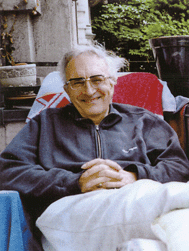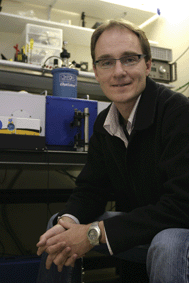Photosynthesis: from natural to artificial
Johannes
Messinger
*a,
Wolfgang
Lubitz
b and
Jian-Ren
Shen
c
aDepartment of Chemistry, Chemical Biological Centre (KBC), Umeå University, Linnaeus väg 6, 90187 Umeå, Sweden. E-mail: johannes.messinger@chem.umu.se
bMax Planck Institute for Chemical Energy Conversion, Stiftstr. 34-36, D-45470 Mülheim an der Ruhr, Germany. E-mail: wolfgang.lubitz@cec.mpg.de
cPhotosynthesis Research Center, The Graduate School of Natural Science and Technology, Okayama University, Okayama 700-8530, Japan. E-mail: shen@cc.okayama-u.ac.jp
The increased knowledge about water oxidation in photosystem II has greatly stimulated the development of artificial catalysts that mimic this process. Prime examples are inorganic Co oxides and CaMn oxides.9–11 The publications of the Nocera group had a tremendous impact on this field: while they were not the first to show that Co-oxides are good water oxidation catalysts, they presented a simple method for in situ catalyst formation that was put into the context of concepts derived from biological water oxidation.12 The idea of constructing ‘artificial leaves’ was a great inspiration and guided many of us into the rapidly growing field of artificial photosynthesis. The previous strict divisions between solar cell research, material sciences, (photo)electrochemical cells and photosynthesis are presently breaking down and are replaced by a common and dynamic effort to develop the energy systems of the future, which convert solar light directly into solar fuels such as hydrogen, methane or alcohols like methanol or ethanol. This technique thus promises to address the demand for fuels, which currently cover about 80% of the energy demand. The development from natural to artificial photosynthesis is dramatically reflected in the submissions we received for this themed issue: more than 2/3 of the papers deal with artificial photosynthesis!
Sadly, we also lost in the past 10 years several of our colleagues. Two of them, who contributed to the 2004 themed issue, we would like to honor here: Gernot Renger and Warwick Hillier.
Gernot Renger (23.10.1937–12.01.2013) obtained his doctoral degree in the group of Horst Witt at the TU Berlin, Germany. He thus belonged to the ‘Urgestein’ of biophysical photosynthesis research in general, and of the investigation of photosystem II and photosynthetic water oxidation in particular. Gernot made tremendous contributions to the understanding of the kinetic and thermodynamic aspects of photosynthetic water oxidation, and has written numerous excellent reviews on this.13 He had an unsurpassed knowledge of the photosynthesis literature and was always strictly against oversimplifications in the interpretation of data. In many instances, his thinking was well ahead of the mainstream. His friendly and enthusiastic personality has inspired many young scientists in the field of photosynthesis.
Warwick Hillier (18.10.1967–10.01.2014) obtained his PhD in the group of Tom Wydrzynski at the ANU in Canberra, Australia. Subsequently he was a postdoc in the lab of Gerald T. Babcock (Michigan, USA), and then became an associate professor at the ANU. Warwick made seminal contributions to the understanding of substrate water binding to the Mn4CaO5 cluster in photosystem II and also developed in Babcock's lab the technique for obtaining FTIR spectra of the different S states of the Kok cycle.14,15 He had a very broad scientific interest that ranged from evolutionary aspects to astronomy. Warwick loved building novel instrumentation, and more recently also got involved in the utilization of cyanobacteria for bioenergy production. Together with Tom Wydrzynski, he edited in 2012 a book on ‘Molecular Solar Fuels’.16 His friendly, calm and authentic personality made him a much-admired and highly-praised researcher in the field of photosynthesis. In 2007, he received the Robin Hill award of the International Society for Photosynthesis Research.
We would like to thank all authors, reviewers and the editorial staff for their contributions to this special issue that documents the forefront of natural and artificial photosynthesis.
References
- Themed Issue on Biophysical Studies on Photosystem II and Related Model Systems, ed. W. Lubitz and J. Messinger, Phys. Chem. Chem. Phys. , 2004, 6 Search PubMed.
- K. N. Ferreira, T. M. Iverson, K. Maghlaoui, J. Barber and S. Iwata, Science, 2004, 303, 1831–1838 CrossRef CAS PubMed.
- Y. Umena, K. Kawakami, J. R. Shen and N. Kamiya, Nature, 2011, 473, 55–61 CrossRef CAS PubMed.
- N. Cox, D. A. Pantazis, F. Neese and W. Lubitz, Acc. Chem. Res., 2013, 46, 1588–1596 CrossRef CAS PubMed.
- N. Cox and J. Messinger, Biochim. Biophys. Acta, Bioenerg., 2013, 1827, 1020–1030 CrossRef CAS PubMed.
- P. E. M. Siegbahn, Acc. Chem. Res., 2009, 42, 1871–1880 CrossRef CAS PubMed.
- J. Kern, R. Alonso-Mori, R. Tran, J. Hattne, R. J. Gildea, N. Echols, C. Glöckner, J. Hellmich, H. Laksmono, R. G. Sierra, B. Lassalle-Kaiser, S. Koroidov, A. Lampe, G. Y. Han, S. Gul, D. DiFiore, D. Milathianaki, A. R. Fry, A. Miahnahri, D. W. Schafer, M. Messerschmidt, M. M. Seibert, J. E. Koglin, D. Sokaras, T. C. Weng, J. Sellberg, M. J. Latimer, R. W. Grosse-Kunstleve, P. H. Zwart, W. E. White, P. Glatzel, P. D. Adams, M. J. Bogan, G. J. Williams, S. Boutet, J. Messinger, A. Zouni, N. K. Sauter, V. K. Yachandra, U. Bergmann and J. Yano, Science, 2013, 340, 491–495 CrossRef CAS PubMed.
- J. Kern, R. Alonso-Mori, J. Hellmich, R. Tran, J. Hattne, H. Laksmono, C. Glöckner, N. Echols, R. G. Sierra, J. Sellberg, B. Lassalle-Kaiser, R. J. Gildea, P. Glatzel, R. W. Grosse-Kunstleve, M. J. Latimer, T. A. McQueen, D. DiFiore, A. R. Fry, M. Messerschmidt, A. Miahnahri, D. W. Schafer, M. M. Seibert, D. Sokaras, T. C. Weng, P. H. Zwart, W. E. White, P. D. Adams, M. J. Bogan, S. Boutet, G. J. Williams, J. Messinger, N. K. Sauter, A. Zouni, U. Bergmann, J. Yano and V. K. Yachandra, Proc. Natl. Acad. Sci. U. S. A., 2012, 109, 9721–9726 CrossRef CAS PubMed.
- M. W. Kanan and D. G. Nocera, Science, 2008, 321, 1072–1075 CrossRef CAS PubMed.
- M. M. Najafpour, T. Ehrenberg, M. Wiechen and P. Kurz, Angew. Chem., Int. Ed., 2010, 49, 2233–2237 CrossRef CAS PubMed.
- D. M. Robinson, Y. B. Go, M. Mui, G. Gardner, Z. J. Zhang, D. Mastrogiovanni, E. Garfunkel, J. Li, M. Greenblatt and G. C. Dismukes, J. Am. Chem. Soc., 2013, 135, 3494–3501 CrossRef CAS PubMed.
- D. G. Nocera, Acc. Chem. Res., 2012, 45, 767–776 CrossRef CAS PubMed.
- G. Renger, Biochim. Biophys. Acta, Bioenerg., 2012, 1817, 1164–1176 CrossRef CAS PubMed.
- W. Hillier and T. Wydrzynski, Coord. Chem. Rev., 2008, 252, 306–317 CrossRef CAS PubMed.
- W. Hillier and G. T. Babcock, Biochemistry, 2001, 40, 1503–1509 CrossRef CAS PubMed.
- Molecular Solar Fuels, ed. T. J. Wydrzynski and W. Hillier, The Royal Society of Chemistry, Cambridge, 2012 Search PubMed.
| This journal is © the Owner Societies 2014 |


